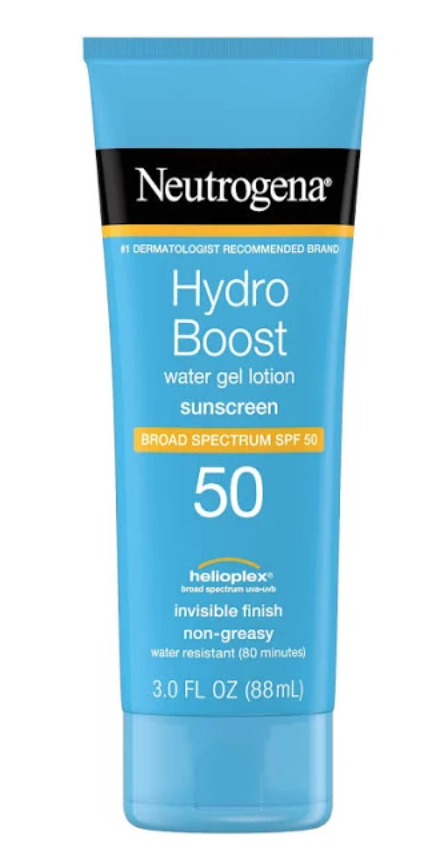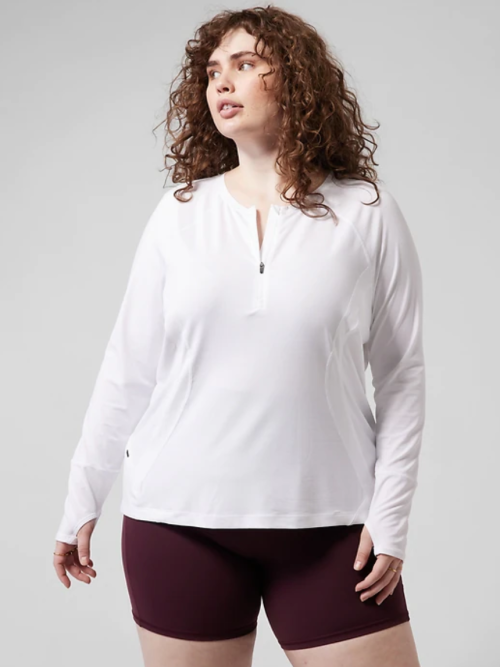Our editors independently select these products. Making a purchase through our links may earn Well+Good a commission
‘I’m a Dermatologist Who Regularly Treats Skin Cancer—Here Are 5 Things I Wish Every Person Knew About Sun Damage’
Every dermatologist is constantly preaching about the benefits of sun protection. Here's what one wants you to know about sun damage.

There’s not a single dermatologist who isn’t constantly preaching about the benefits of proper sun protection. And as we all know, while putting on sunscreen and avoiding prolonged sun exposure can help prevent signs of aging like hyperpigmentation and premature wrinkles, its most important benefit is protecting you from skin cancer.
Experts in This Article
board-certified dermatologist
“Skin cancer is the most common form of cancer, and it is something that is so easily prevented,” says Ivy Lee, MD, a board-certified dermatologist in Pasadena, California. “Current estimates are that one in five Americans will develop skin cancer in their lifetime, and nearly 20 Americans die from melanoma every day. Unprotected exposure to ultraviolet light from the sun is the most preventable risk factor for skin cancer, making it critical to protect your skin outdoors.”
Protecting your skin is relatively simple as long as you understand the basics. These are the five things Dr. Lee wishes everyone knew about sun damage.
5 things a dermatologist wants you to know about sun damage
1. There’s no such thing as a ‘safe tan’
“Many of my patients say,’ ‘Well, I don’t really burn. I just tan,’ but there’s no such thing as a ‘safe tan,'” says Dr. Lee. “Any time we are getting exposed to ultraviolet rays from being outdoors, we’re accumulating DNA damage in our skin cells—whether you’re laying out on the beach or running errands and picking up a little bit of sun exposure there. The DNA damage from all that sun exposure is cumulative, meaning that it builds up over time, and it’s what leads to the signs of premature aging that we see with wrinkles, dark spots, and leathery skin. It’s also what leads to skin cancer.”
Beyond that, staying out in the sun and heat for too long can cause other skin issues like heat rash or sun poisoning, which can be uncomfortable and take time to heal.
2. Anyone can get skin cancer, regardless of skin color
While people with lighter skin tones are more likely to get skin cancer, that doesn’t mean people with darker skin tones are immune. “People with darker skin tones can still get skin cancer,” says Dr. Lee. “And oftentimes, when we do develop skin cancer, it is caught at a later stage, and we are less likely to survive or have a good outcome with skin cancer.” So regardless of your complexion, pay close attention to how you’re protecting it, and be sure to get your skin checked once a year.
3. Using a broad-spectrum sunscreen with at least SPF 30 is the baseline
Not all sunscreens are created equally. Dr. Lee says that you should always look for a broad-spectrum sunscreen, “meaning it blocks UVB and UVA rays, which are the two main types of ultra radiation that reach the Earth’s surface,” she says. Plus, you want to make sure it has a sun protection factor (SPF) of at least 30. “We know that an SPF 30 rating usually means that it blocks out about 97 percent of UVB rays,” says Dr. Lee.

Buttah Tinted Mineral Sunscreen SPF 30 — $24.00

Neutrogena Hydro Boost Water Gel Lotion Sunscreen SPF 50 — $10.00
4. You need to apply (and reapply) enough sunscreen
“The reality is that most of us aren’t applying enough sunscreen, and then most of us are not reapplying as often as we should,” says Dr. Lee. If you aren’t using the right amount of product, you aren’t getting as much protection as you might think—if you only apply half as much SPF 30 as you need, you’re really only getting SPF 15 protection. To cover your body, use the amount of product you’d need to fill a shot glass, and for your face, make a peace sign and draw lines of product over two of your fingers.
No matter how much sunscreen you’re applying in the a.m., you also need to reapply regularly. “We want to make sure that people reapply, usually every two to four hours, depending on your outdoor exposure,” says Dr. Lee. She recommends reapplying more frequently if you’re sweating, in and out of the water, or near reflective surfaces like snow or sand.
5. Sun-protective clothing can make a big difference
If you spend a lot of time outdoors, you can benefit from investing in sun-protective clothing. “These articles of clothing are protective because they’re either physically protective—long sleeve, long shirts, brimmed hats—or because they’re made of fabrics that have a UPF rating,” says Dr. Lee. “This ‘ultraviolet protection rating’ is a standard measure of how much ultraviolet radiation the fabric itself filters out, so you’ll often see UPF ratings of 30 or 50 on some clothing.” So double down on your standard sunscreen with a hat and a sun-protective shirt, and you’ll be ready to safely enjoy the summer ahead.

Athleta Pacifica Illume UPF Fitted Top — $79.00
Oh hi! You look like someone who loves free workouts, discounts for cutting-edge wellness brands, and exclusive Well+Good content. Sign up for Well+, our online community of wellness insiders, and unlock y “ur reward” instantly.
Sign up for the Well+Good SHOP Newsletter
Get exclusive deals on wellness, beauty, fitness, and food products that have been hand-picked by our editors.
Got it, you've been added to our email list.










